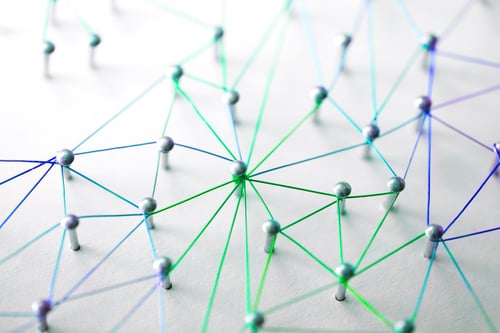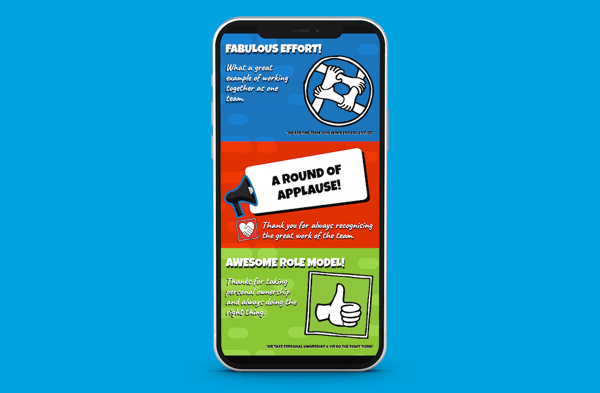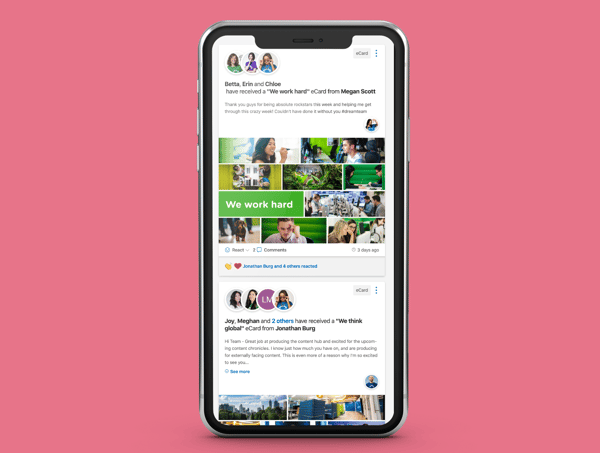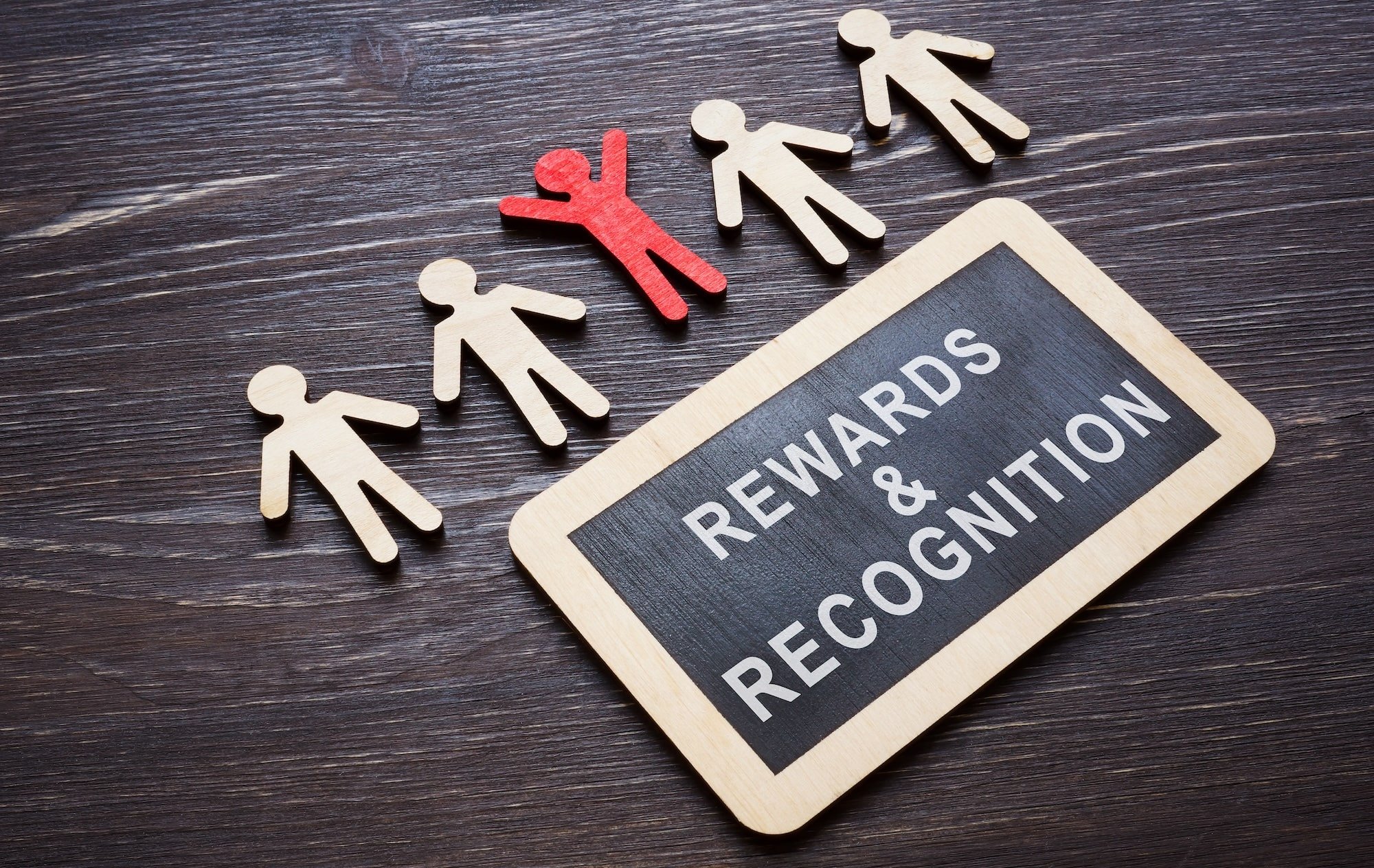Most organisations understand the importance of employee recognition, but certain forms of recognition are more impactful than others when it comes to driving lasting change in the business. So why is a peer-to-peer reward and recognition program so powerful? Used intentionally and strategically, it can improve your culture, increase employee loyalty and build company-wide connections – all of which fuel productivity, growth and innovation!
Our 2024 research has found that 74% of HR managers believe that their employees regularly use their reward and recognition program to recognise the work of colleagues… compared to 48% of employees who say the same. This gap suggests that there's still work to do to encourage peer-to-peer recognition and unlock its big business benefits, which our findings suggest are significant:
- 1 in 2 Australian employees have considered leaving their job with 35% citing a lack of recognition as a driving factor of this desire to leave.
- 49% of HR managers state that their business has seen an increase in employee turnover in the past year and… 56%
of HR managers who saw turnover increase in 2023 state that their recognition and reward program is underfunded. - 1 in 3 employees say that receiving recognition and rewards makes them feel more productive.
- 62% of Australian employees say that their work wellbeing would improve if they were simply thanked more for their hard work.
So, what does this mean for your business? How does peer-to-peer recognition drive business performance? Here's how:
| 1. One act of recognition creates three times the goodness |
| 2. Being recognised builds company-wide confidence |
| 3. Your company learns to live and breathe your values |
| 4. It gives everyone a productivity boost |
| 5. Every employee becomes responsible for your culture |
| 6. Social recognition promotes transparency, connection and collaboration |
1. One act of recognition creates three times the goodness
 When an employee is recognised, they are 3x more likely to recognise someone else, creating a ripple or domino effect of good being shared across your business. People who feel recognised and appreciated are more likely to recognise the good work of others. This is a fact of human nature (what social scientists call 'positive reciprocity'). Recognition makes you feel good, both when you receive recognition and when you acknowledge someone else.
When an employee is recognised, they are 3x more likely to recognise someone else, creating a ripple or domino effect of good being shared across your business. People who feel recognised and appreciated are more likely to recognise the good work of others. This is a fact of human nature (what social scientists call 'positive reciprocity'). Recognition makes you feel good, both when you receive recognition and when you acknowledge someone else.
As more people get on board with making recognition a habit, the ripple effect spreads throughout the organisation until it becomes ingrained in your work culture.
2. Being recognised builds company-wide confidence
 Having progress and contribution publicly recognised and rewarded helps boost inner confidence as well as team-wide trust in the capabilities and competence of their peers. Public strategic recognition is especially effective in building trust and confidence across the organisation because it connects the action being recognised back to the business.
Having progress and contribution publicly recognised and rewarded helps boost inner confidence as well as team-wide trust in the capabilities and competence of their peers. Public strategic recognition is especially effective in building trust and confidence across the organisation because it connects the action being recognised back to the business.
Strategic recognition is when you show appreciation for a success that helped improve the employee or customer experience and can be tied to your company’s values, purpose or objectives. So when employees are using strategic recognition and this recognition is displayed for others to see, everyone can understand how the company's mission is being lived and feel confident that their peers are working towards the same goal.
3. Your company learns to live and breathe your values
Promoting company values through your peer-to-peer recognition program helps build understanding and awareness of what they look like in action, and the behaviour associated with success.

Euro Garages Australia (EG) is a great example of an organisation that uses its employee recognition program to communicate company values and embed them in the EG culture. EG was going through a brand refresh, so the team worked to create new company values – 'The Way We Work Together' – as well as a clear set of behaviours that accompanied each value.
The team launched a set of branded eCards to reflect EG's new values on the organisation's employee engagement platform, 'Booster.' When employees send eCards, they can choose from specific values and behaviours they've seen someone else demonstrate, and are instantly reminded of what the organisation's values are and how they're guiding great work at EG. The social recognition wall on Booster displays more than 14,000 eCards sent through the platform, so other employees are also reminded of 'The Way We Work Together' as they read through the recognition feed.

4. It gives everyone a productivity boost
77% of employees say they would work harder if they felt better recognised. The simple solution to this is to recognise more, but the type of recognition still matters as employees don't always notice recognition when it happens. Reward Gateway has found that 80% of senior leaders believe recognition happens regularly, but only 17% of employees feel they work in a recognition-rich environment.
In order for employees to feel the recognition, it needs to be meaningful and specific. Instead of a simple 'Thank you,' try saying 'Thank you for helping me with ____, it really helped me to achieve ____ and I appreciate how you always ____.' Employees will not only understand what they are being recognised for, but also the impact their work had on a project.
We know what gets recognised gets repeated, so keep recognising progress as it happens and you’ll see it skyrocket as a result!
5. Every employee becomes responsible for your culture
 Instead of relying on a top-down, manager-only approach, encouraging employees to recognise coworkers makes individuals accountable for sharing the wins and telling the stories that eventually become legend. While eCards are a great, simple way for colleagues to say 'thank you,' 'congratulations,' 'well done' and much more, you can make your peer-to-peer recognition program culture-driven by creating eCards for each of your company values.
Instead of relying on a top-down, manager-only approach, encouraging employees to recognise coworkers makes individuals accountable for sharing the wins and telling the stories that eventually become legend. While eCards are a great, simple way for colleagues to say 'thank you,' 'congratulations,' 'well done' and much more, you can make your peer-to-peer recognition program culture-driven by creating eCards for each of your company values.
When employees send values-based recognition, it allows other employees to see company values in action and helps everyone to understand why the values are important and what it means to live them at the company.
6. Social recognition promotes transparency, connection and collaboration
One glance at your recognition program trends gives you visibility of key contributors, whether (or which) teams are collaborating and sharing success together, who’s getting left behind and opportunities to strengthen culture. At Reward Gateway, senior leaders and employees alike frequently visit our 'Wow Wall' – a social recognition feed that displays all eCards sent at RG – to see wins happening across the business. Through comments, reactions and likes, employees are able to engage with other employees' moments of recognition.
This not only amplifies the moment of recognition to drive a greater feeling of appreciation, but also helps boost connections across teams and departments and allows everyone to see the great work that is happening across the business.

Interested in learning more about how a peer-to-peer recognition program can support your business goals? Get in touch with us, and a member of our team will walk you through how you can tailor a recognition program to meet your company's needs.
 Phoebe Hutton
Phoebe Hutton






